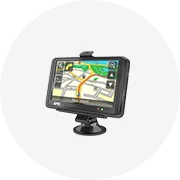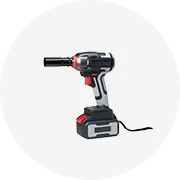Types of Bus Sleeper Seats
Sleeper seats for buses are an essential part of long-distance travel, designed to maximize passenger comfort and ensure a restful journey. They come in various styles, each offering distinctive features to cater to different needs and preferences.
Reclining Seats
These bus sleeper seats offer a simple yet effective way to enhance passenger comfort. The backrests recline to varying degrees, allowing passengers to lean back and relax. Many include footrests for additional support.
Best for: Short to medium-haul trips where relaxation is essential but full sleeping accommodations aren't required.
Lie-Down Seats
Designed to provide passengers with a fully flat sleeping surface. The seat configuration allows the entire area to lie flat, creating a bed-like space that minimizes stiffness and fatigue.
Best for: Long-haul overnight journeys where quality sleep is a priority.
Recliner Seats
These blend the features of traditional bus seats and sleeper accommodations, reclining significantly while not compromising the bus's overall space. Equipped with footrests and ample legroom.
Best for: Mid-range journeys where passengers seek relaxation without fully enclosed sleeping quarters.
Business Class Seats
Designed to meet the highest standards of luxury and comfort. Spacious seats often include personal entertainment systems, adjustable lighting, power outlets, and privacy partitions.
Best for: Premium travel experiences for discerning passengers willing to pay for luxury.
Family Compartments
Multiple sleeper seats arranged together for families traveling as a group. May offer additional amenities such as entertainment options, adjustable lighting, and privacy curtains.
Best for: Family travel where members wish to stay together during the journey.
| Seat Type | Comfort Level | Best Journey Length | Space Efficiency | Privacy Level |
|---|---|---|---|---|
| Reclining Seats | Moderate | 3-5 hours | High | Low |
| Lie-Down Seats | High | 6+ hours | Low | Moderate |
| Recliner Seats | Moderate-High | 4-8 hours | Moderate | Low |
| Business Class | Very High | Any duration | Very Low | High |
| Family Compartments | High | 6+ hours | Moderate | High |
Expert Tip: When selecting sleeper seat types for your bus fleet, consider the average journey duration your passengers typically take. For routes under 5 hours, reclining seats offer the best balance of comfort and capacity, while overnight routes benefit significantly from lie-down or business class configurations.
Specifications and Maintenance of Sleeper Seats for Buses
Key Specifications
Physical Specifications
- Dimensions: Vary by model to accommodate different bus layouts
- Seat Width: Typically 45-60 cm per seat
- Recline Angle: From 120° (reclining) to 180° (lie-flat)
- Weight Capacity: Usually rated for 100-150 kg per seat
Material Specifications
- Seat Material: Leather, synthetic leather, or fabric upholstery
- Frame Material: Steel or aluminum construction for durability
- Padding: High-density foam for comfort and longevity
- Fire Resistance: Materials should meet transportation safety standards
Feature Specifications
- Seat Adjustment: Manual or electric recline mechanisms
- Footrests: Adjustable positions for comfort
- Safety Features: Seatbelts, headrests, side bolsters
- Accessories: Cup holders, reading lights, charging ports
Maintenance Requirements
| Maintenance Task | Frequency | Importance | Notes |
|---|---|---|---|
| Regular Cleaning | Weekly | High | Vacuum and wipe with appropriate cleaners |
| Inspect for Damage | Monthly | Critical | Check for torn upholstery, loose stitching, broken mechanisms |
| Lubricate Moving Parts | Quarterly | Medium | Focus on reclining mechanisms and footrests |
| Upholstery Treatment | Bi-annually | Medium | Apply protectants according to material type |
| Hardware Inspection | Quarterly | High | Check and tighten all bolts and fasteners |
| Deep Cleaning | Annually | Medium | Professional cleaning of all upholstery |
Important: Always follow manufacturer-specific maintenance guidelines to maintain warranty coverage and ensure optimal seat performance. Using incorrect cleaning products can damage upholstery and reduce seat lifespan.
How to Choose Sleeper Seats for Buses
Selecting the right sleeper seats for your bus requires careful consideration of multiple factors to ensure passenger satisfaction and operational efficiency.
Safety Standards
Safety should be your top priority when selecting bus sleeper seats. Look for these essential safety features:
- Seatbelts integrated into the design
- Crash-tested seat structures
- Side impact protection features
- Compliance with national safety regulations
- Fire-resistant materials
Key consideration: Never compromise on safety features to reduce costs.
Comfort Features
For long-distance travel, passenger comfort directly impacts customer satisfaction and repeat business:
- Adequate padding and ergonomic support
- Adjustable headrests for different passenger heights
- Sufficient recline angle (120°-180°)
- Legroom and footrest options
- Climate control features (ventilation, heating)
Key consideration: Balance comfort with capacity requirements.
Quality Materials
Material selection affects both passenger experience and long-term maintenance costs:
- Upholstery: High-quality polyester or leather for durability
- Padding: High-density foam that retains shape
- Frame: Sturdy aluminum or steel construction
- Stain and wear-resistant fabrics
- Easy-to-clean surfaces
Key consideration: Higher initial cost often means lower lifetime maintenance.
Customization Options
Tailor your seats to match your brand identity and specific operational needs:
- Brand-specific colors and logo embroidery
- Seating layout options (1x1, 2x1, 2x2)
- Modular designs for easier installation
- Entertainment system integration
- Power outlet and USB charging options
Key consideration: Balance customization with standardization for maintenance.
| Selection Factor | Budget Option | Mid-Range Option | Premium Option |
|---|---|---|---|
| Safety Features | Basic seatbelts, standard crash testing | Enhanced seatbelts, improved side impact protection | Advanced restraint systems, comprehensive impact protection |
| Comfort Level | Standard padding, manual recline | Enhanced padding, better ergonomics | Premium materials, electric adjustment, massage features |
| Durability | 3-5 year lifespan | 5-7 year lifespan | 7-10+ year lifespan |
| Maintenance | Regular replacement of parts | Moderate maintenance needs | Low maintenance, easily serviceable |
| Passenger Capacity | Maximum capacity | Good balance of space and capacity | Prioritizes space over capacity |
Pro Tip: Consider your target market and journey types when selecting seats. Premium routes can justify higher-end seats with better profit margins, while commuter or budget routes may need to maximize capacity with simpler seat designs.
How to DIY and Replace Sleeper Seats for Buses
Replacing bus sleeper seats can be a challenging but rewarding task that can save on maintenance costs. With proper preparation and technique, it's a manageable project for those with basic mechanical skills.
Tools and Materials Needed:
- Socket wrench set
- Screwdriver set (Phillips and flathead)
- Torx bits (if needed for seat bolts)
- New sleeper seats for buses
- Seat cover or upholstery (if reusing old seats)
- Seat belt assembly (if not included with new seats)
- Thread-locking compound
- Work gloves and safety glasses
- Cleaning supplies
- Measuring tape
Step-by-Step Replacement Guide:
- Prepare the Bus
Remove all passengers and belongings. Ensure adequate workspace and lighting. Disconnect the battery if working with seats that have electrical components. - Document the Original Setup
Take photos of the current seat installation from multiple angles. Note the positions of all bolts, electrical connections, and attachment points. - Disconnect Electrical Connections
If the old seats have electrical components (heating, adjustable features, entertainment systems), carefully disconnect them. Label all wires for easier reconnection. - Remove Seat Covers
If you plan to reuse upholstery, carefully remove the covers from the old seats. Document the attachment method for reinstallation. - Remove Mounting Bolts
Using the appropriate tools, remove all bolts securing the seats to the bus floor. Some may be difficult to access or tightly secured. - Extract the Old Seats
With assistance, carefully lift and remove the old seats. Be mindful of their weight and any remaining connections. - Clean the Installation Area
Thoroughly clean the floor where the new seats will be installed. Check for any damage to mounting points and repair if necessary. - Position New Seats
Place the new sleeper bus seats in their intended positions. Verify alignment with floor mounting points before proceeding. - Install and Secure Bolts
Insert bolts through seat mounting brackets and floor attachment points. Apply thread-locking compound and tighten to manufacturer specifications. - Connect Electrical Components
If the new seats have electrical features, connect all wiring according to manufacturer instructions and your earlier documentation. - Install Upholstery
If using new covers or transferring old upholstery, install them on the seats according to the proper attachment method. - Verify Safety Features
Ensure all seatbelts and safety components are properly installed and functioning. This step is critical for passenger safety. - Test Functionality
Test all seat adjustments, electrical features, and recline mechanisms to ensure proper operation. - Final Inspection
Perform a detailed inspection of the installation. Check for loose bolts, proper alignment, and complete functionality.
Safety Warning: Bus seats are critical safety components. If you're unsure about any aspect of the installation, consult with a professional. Improperly installed seats can present serious safety hazards during travel or accidents.
Maintenance Tip: After installing new seats, create a regular maintenance schedule. Check bolt tightness monthly for the first three months as new seats settle into place. This prevents loosening during operation.
Frequently Asked Questions
Yes, properly designed and installed sleeper seats for buses are safe for passenger use. Modern sleeper seats incorporate several safety features including:
- Integrated seatbelts designed specifically for the reclined position
- Reinforced frames that meet or exceed transportation safety standards
- Energy-absorbing materials to protect passengers during sudden stops
- Secure mounting systems that prevent seats from detaching during accidents
For maximum safety, always ensure that seats are installed according to manufacturer specifications and that passengers use seatbelts even when in the sleeping position.
Yes, most sleeper bus seats are designed with reclining capabilities. The degree of recline varies by model:
- Standard reclining seats typically offer 110-130° of recline
- Semi-sleeper seats can recline to 140-160°
- Full sleeper seats offer 170-180° recline for a nearly flat sleeping surface
Many modern sleeper seats feature multi-position recline systems, allowing passengers to adjust the seat to their preferred comfort level. Higher-end models may include electric recline mechanisms, while budget options typically use manual adjustment levers.
The passenger capacity of a sleeper bus depends on several factors:
| Bus Size | Seat Layout | Typical Capacity |
|---|---|---|
| Standard (12m) | 2+1 (two seats left, one right) | 30-36 passengers |
| Standard (12m) | 2+2 (two seats each side) | 38-44 passengers |
| Articulated (18m) | 2+1 configuration | 45-52 passengers |
| Double-decker | 2+1 configuration | 50-60 passengers |
Luxury sleeper buses typically have lower capacities as they prioritize passenger comfort with wider seats and more legroom. Budget sleeper buses may maximize capacity with narrower seats and more compact arrangements.
The average lifespan of bus sleeper seats ranges from 5-10 years depending on several factors:
- Material Quality: Premium upholstery and frame materials can last significantly longer
- Usage Patterns: Seats in buses with high passenger turnover wear faster
- Maintenance Frequency: Regular cleaning and maintenance extend seat life
- Climate Conditions: Extreme temperatures and humidity can accelerate wear
With proper maintenance and periodic reupholstering, the structural components of high-quality sleeper seats can last even longer, making them a cost-effective long-term investment for bus operators.
Bus sleeper seats are not universally suitable for all route types. Their appropriateness depends on:
- Journey Duration: Most beneficial for trips exceeding 4-5 hours
- Time of Day: Maximum value for overnight journeys
- Road Conditions: Most comfortable on highways with smooth surfaces
- Passenger Demographics: More appealing to business travelers and tourists than commuters
For short commuter routes, standard seating typically provides better capacity efficiency. Sleeper seats deliver the greatest return on investment for long-distance intercity routes, especially those operating overnight services.




























































